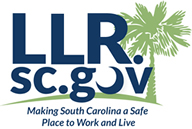Section 12-43-210, subsection (4) requires that when the use of agricultural land changes to a non-agricultural use, that a rollback in taxes be paid. The Assessor is required to keep records, which indicate both the fair market value of property and use value and the applicable ratio used. It is the responsibility of the Assessor to provide the Auditor’s Office with the proper information for the rollback taxes. The Auditor’s Officer shall furnish the Treasurer’s Officer with the proper information to compute the rollback taxes. Section 12—210, subsection (4) provides for a rollback and states the method to be used. Section 12-43-210, subsection (4):When real property which is in agricultural use and is being valued, assessed and taxed under the provisions of this act is applied to a use other than agricultural, it shall be subject to additional taxes, hereinafter referred to as rollback taxes, in an amount; equal to the difference, if any, between the taxes paid or payable on the basis of the valuation and the assessment authorized hereunder and the taxes that would have been paid or payable had the real property been valued, assessed and taxed as other real property in the taxing districts, in the current tax year (the year of change in use) and each of the five tax years immediately preceding in which the real property was valued, assessed and taxed as herein provided. If in the tax year in which a change in use of the real property occurs the real property was not valued, assessed and taxed under this act, then such real property shall be subject to rollback taxes for each of the five tax years immediately preceding in which the real property was valued, assessed and taxed hereunder. In determining the amounts of the rollback taxes chargeable on real property, which has undergone a change in use, the assessor shall for each of the rollback tax years involved ascertain:
- The fair market value of such real property under the valuation standard applicable to other real property in the same classification;The amount of the real property assessment for the particular tax year by multiplying such fair market value by the appropriate assessment ratio provided in this act;The amount of additional assessment on the real property for the particular tax year by deducting the amount of the actual assessment on the real property for that year from the amount of real property assessment determined under (B) hereof;
- The amount of the rollback for that year by multiplying the amount of the additional assessment determined under (C) hereof by the property tax rate of the taxing district applicable for that tax year.
The Attorney General’s Office has advised this office that it is the owner of the real property as of December 31st in the use changes who is liable for the “additional taxes” and is to be collected in the tax year when the property is first taxable upon the different use.
Source: The Anderson County Tax Assessor’s Office and has been reprinted in its entirety with their permission. You may contact the Tax Assessor’s Office at 864/260-4028 if you have any question regarding this information.



